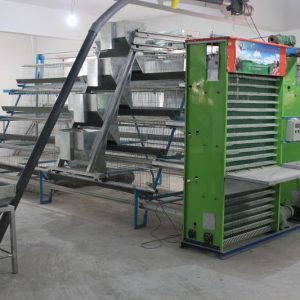Chicken breeders should focus on the following links:
1. After the last batch of chickens are released, arrange for the house cleaning and disinfection as soon as possible to ensure sufficient empty house time.
2. The litter should be clean and dry, and tidy up. At the same time, disinfection.
3. Raise the same batch of chickens in the same chicken house to prevent cross-infection of diseases.
4. Increase the temperature at least 24 hours in advance so that the temperature of the floor bedding is 32-35°C.
5. Whether it is bedding or online, all in and all out should be promoted.
6. Density: Under normal circumstances, the stocking density is 8 per square meter. In winter, it can be increased to 10 per square meter. At the beginning of brooding, it can be 35 per square meter. It is recommended to expand the group once for 7 days, 14 days and 21 days.
7. Temperature: Because the heat regulation system of the chicks has not yet been fully developed, some heating systems need to be provided to heat the chicks. Special attention should be paid to whether the chicks’ behavior is consistent with the temperature in the house (the chicks are evenly distributed under the brooding umbrella, eating and drinking water are normal, active, and the sound is clear, indicating that the local brooding temperature is appropriate).
8. Lighting: There are many lighting programs that are said to be the most scientific. We must choose the lighting program that suits us. If your broiler is raised for more than 49 days (weight 2.5 kg), it is recommended that you use the light-limiting program, because proper light-limiting during the growth period will help prevent the late death (sudden death) rate from being too high. If broilers are raised for about 42 days or 35 to 36 days, intermittent light or 23 hours of light and 1 hour of darkness should be adopted. Illumination time unit: 20 lux is equivalent to 3.3 watts per square meter, and 10 lux is equivalent to 1.7 watts/meter.
9. Humidity: Keep relatively high humidity for 1-2 weeks in the early stage, and keep relatively low humidity at the age of 3 weeks. The reference standard is: 1-2 weeks, the relative humidity can be controlled at 65%-70%, and then controlled at 55 %-60%, the minimum is not less than 40%.
10. Ventilation: Continued high concentration of harmful gases (such as ammonia, hydrogen sulfide, carbon monoxide, carbon dioxide and dust, etc.) can cause anemia in chickens, weakened physical fitness, decreased production performance and disease resistance, and easily induce respiratory diseases And ascites, bring huge losses to broiler production. Ventilation requirements: broiler chickens need good ventilation throughout the breeding cycle, especially during the later period of breeding. To put it simply: that is, if people do not smell ammonia, odor and other pungent odors when they arrive in the chicken house, it means good ventilation. Control method: The brooding room is closed for the first 3 days of brooding, and the top vent can be opened later. Open doors and windows appropriately in summer and autumn according to the outside temperature, but prevent cold air from directly blowing on the chicks; increase the house temperature by 2-3°C before ventilating in the cold season, and open the sunny windows appropriately at noon and afternoon when the outside temperature is high for ventilation Take a breath. Matters needing attention: to prevent gas poisoning; as the weight of the broiler gradually increases, the ventilation volume should be increased accordingly; the ventilation volume should be increased as much as possible under the premise of ensuring the temperature; strictly prevent the invasion of thieves.
11. Feed selection: The cost of feed accounts for about 70% of the total cost of broilers. The choice of feed is directly related to the economic benefits of broiler feeding. The core of the problem is which feed is the best for feeding. You can do some comparative experiments on which feed is used. According to the current domestic situation, moderately priced full-price pellet feed for broilers produced by a reputable medium or large feed factory can be used.
12. Management from the growth period to the slaughter period: The core of feeding during the growth period to the slaughter period is to produce the most chicken that meets the product requirements under reasonable feed consumption. One of the most prominent problems of management during this period is to properly control weight gain and reduce the dead stock caused by excessive growth of chickens in the later period. For broilers with a large slaughter weight, the early body weight should be appropriately reduced to achieve the expected performance.
13. Immunization precautions: The immunization methods of broiler chickens are often neglected, and diseases are prone to occur in the later stage. Therefore, it is recommended to adopt live vaccines of eye, nasal drops, spray and drinking immunization methods. If possible, use eye drops and nose drops.

